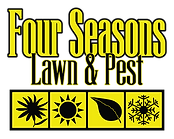Combatting Crane Fly Damage: A Guide for the Palouse and LC Valley
- Tyson Woodbury
- Apr 29, 2024
- 2 min read
As your local lawn care experts, we understand the frustration that crane fly damage can bring to your beautiful lawns. These seemingly innocuous insects can wreak havoc on your green spaces if left unchecked. In this blog post, we'll delve into the signs and symptoms of crane fly damage, and more importantly, we'll provide you with effective treatment and recovery options to restore your lawn to its former glory.
Identifying Crane Fly Damage
Crane flies, often mistaken for giant mosquitoes, are not the ones causing direct damage to your lawn. It's their larvae, known as leatherjackets, that pose the real threat. These voracious feeders munch on the grassroots, leading to weak, brown patches in your lawn. Here are some telltale signs of crane fly damage:
Thinning Grass: If you notice areas of your lawn with sparse or thin grass coverage, it could be a sign of leatherjacket feeding.
Yellowing Patches: As the grass roots are damaged, the affected areas may turn yellow or brown, indicating stress and decline.
Spongy Texture: When walking on the lawn, you might feel a spongy or soft texture underfoot, which suggests that the grassroots have been compromised.
Treatment and Recovery Options
Now, onto the good news: there are effective ways to combat crane fly damage and restore your lawn's health. Here's what you can do:
Nematode Application: Beneficial nematodes, specifically Steinernema feltiae, are natural predators of crane fly larvae. Apply nematodes to the affected areas following the manufacturer's instructions for optimal results.
Overseeding: Once the leatherjackets are under control, overseeding can help replenish the damaged areas with healthy grass seed. Be sure to choose a grass seed blend that thrives in your local climate.
Proper Lawn Care Practices: Maintain a regular lawn care routine, including proper watering, mowing, and fertilization. A healthy lawn is better equipped to withstand pest infestations and recover from damage.
Professional Assistance: If you're unsure about the extent of the damage or need assistance with treatment, don't hesitate to reach out to your local lawn care professionals. They have the expertise and resources to assess your lawn's condition and provide tailored solutions.
Preventing Future Infestations
Prevention is key to avoiding future crane fly damage. Here are some proactive steps you can take:
Regular Inspections: Keep an eye out for crane fly activity in early spring and late summer when they're most active. Prompt action can prevent infestations from escalating.
Aerate Your Lawn: Regular aeration improves soil drainage and reduces thatch buildup, creating less hospitable conditions for crane fly larvae.
Maintain Healthy Soil: Healthy soil promotes strong grass growth, making your lawn less susceptible to pests and diseases.
Conclusion
While crane fly damage can be a nuisance, it's not the end of the road for your lawn. By identifying the signs early and implementing effective treatment and recovery strategies, you can revitalize your green space and enjoy a lush, healthy lawn once again.
Remember, we're here to support you every step of the way. If you have any questions or need assistance with crane fly damage or any other lawn care issues, don't hesitate to contact us. Together, we'll keep your lawn looking its best year-round.

.png)





Comments